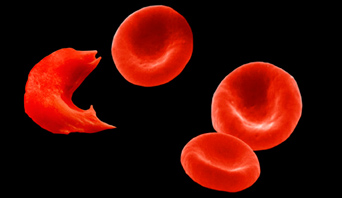These are parts of an article by a guy called Peter Tyson who writes at this website: http://www.pbs.org.
You can find the original article at this address: http://www.pbs.org/wgbh/nova/evolution/are-we-still-evolving.html
Today I want you to learn that:
- Where new forms of a gene result from mutation there may be relatively rapid change in a species if the environment changes.
- Develop an understanding of the timescales involved in evolution.
You will need this Are Humans Still Evolving Learning instructions open on your laptop – follow the instructions contained in it.
 “There has been no biological change in humans in 40,000 or 50,000 years. Everything we call culture and civilization we’ve built with the same body and brain.”
“There has been no biological change in humans in 40,000 or 50,000 years. Everything we call culture and civilization we’ve built with the same body and brain.”
—Stephen Jay Gould
I was surprised when I read these words from one of the 20th century’s leading thinkers on evolutionary theory. We hominids have been evolving for millions of years. Why would that have suddenly stopped?
The most obvious reason for thinking our natural evolution has ceased is that we’re just a single species. In the 200,000 years since we modern humans first appeared, we have not split into other species. Any person on Earth today can, theoretically, interbreed with any other of the opposite sex.
Before the Human Genome Project, the tools and data did not exist to reliably check for signs of recent human evolution. While anyone can see, for example, that obvious physical differences exist between races, even more so between individual people, as the biologist Ernst Mayr wrote in 1997, “when it comes to the psychological characteristics that really count, the role of genes is largely undetermined” [my italics].
Some biologists argue that around 40,000 years ago human cultural development intensified and this freed us from the pressures of natural selection. We made clothes rather than grew more hair; we crafted better weapons rather than became stronger. Genetically, our evolution had all but stopped.
With increasingly rare exceptions, survival in the West no longer depends on a person’s genes. Advances in medicine and technology enable 98 percent or more of all babies born in the United States, Europe, or Japan, for example, to survive long enough to reproduce and pass on their DNA. In the past, natural selection would have weeded out the less reproductively fit, but no longer.
Other experts disagree however and believe our biological evolution has not only proceeded but has sped up since we developed agriculture about 10,000 years ago.
Using one of several techniques now available to search for signs of recent selection in the human genome, scientists determined that fully 7 percent of our genes appear to be under recent evolutionary pressure. Moreover, they contend, we humans are evolving away from each other. That is, only some people, but not all of us, have traits such as the upper eyelid fold of northern Asians or the very dark skin of most Dravidians in southern India or the blue eyes of many northern Europeans—all adaptations that presumably arose because they conferred some benefit in specific kinds of environments.
They also say that Ashkenazi (European) Jews have a genetic advantage in intelligence, and that it arose from selection pressure for success in financial occupations. They offer striking figures—for example, Jews, while never more than 3 percent of the American population, account for 40 percent of the American Nobel Prize winners in science and economics. The team say the Ashkenazim gained this genetic enhancement because of their way of life in the Middle Ages. Between about 800 and 1600 in Europe, Jews tended not to marry outside their community, and more successful Jewish families had more surviving children.
Some of the strongest signs of recent selection concern genes that correlate with certain infectious diseases.As early as the 1950s researchers noted that the sickle-cell mutation in the beta hemoglobin gene provided carriers of the trait with protection against malaria. Since then, scientists have identified a number of genetic variants that confer some defense against other diseases, including HIV and lassa, a hemorrhagic fever endemic to parts of central and west Africa.


Discussion
No comments yet.